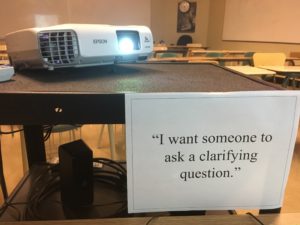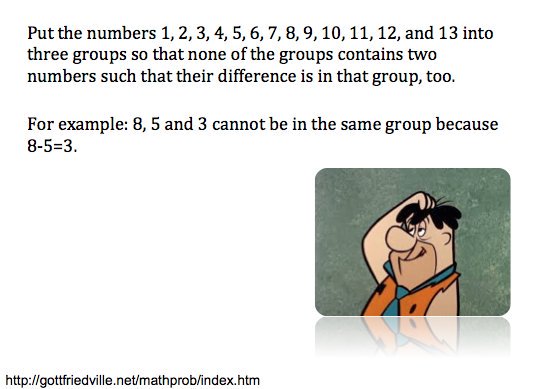I have mixed feelings about student questions.
We (as teachers) act like we want students to ask questions; however, there are plenty of implicit messages about teaching that tell us that good teachers don’t need students to ask questions. One of the oldest pillars of teaching tells us to provide adequate wait time for students to formulate and ask questions, but there is a sense of relief when time passes without the need for clarification. This feeling essentially equates clarity with quality. Wait time becomes an emergency procedure to be used when we feel an awkward imbalance in the room.
These messages are also felt by students. Students might want to ask questions but school sends implicit messages that good learners don’t need to ask questions. In the same way that teachers can feel like questions reflect poorly on their ability to teach, students interpret their desire for clarification as an indictment on their ability to learn. Sayings like, “there are no bad questions” or “if you are thinking it, so is someone else” feel fake. Questions signal a breakdown in the smooth communication between teacher and student. What’s weird is that both sides blame themselves. In an attempt to shift this culture, I set out this year to stop entertaining questions and start expecting them.
Two focus going into year:
1) (a pedagogical structure shift) Lag assessments with immediate student-teacher interviews on every “work day”.
2) (a pedagogical stance shift) Don’t pause and ask if there are questions. Instead say, “I want someone to ask a clarifying question”
— Nat Banting (@NatBanting) August 20, 2018
Others have reported a similar focus, and it seems to lead back to the initiative of Howie Hua. To remind myself, I printed out a page that said, “I want someone to ask a clarifying question” and posted it in plain sight in my classroom.

Here, I describe the positive initial experiences with this simple shift in verbiage. As an illustration, I’ll use a task that appeared in my Twitter feed thanks to Ed Southall.

I projected the image, and talked through the example of 8, 5, and 3. I then chose two other numbers (5 and 11), and then asked which number is then banished from the set (6). I then clearly re-stated what would signal a resolution to the task: they are done when they successfully place each number into exactly one of the three sets.
I paused for a brief moment and then said, “I want someone to ask a clarifying question”. One student got the ball rolling:
“Do we only place each number once?”
I did my best to address the question, and then was sure to add, “That’s an important question”.
“What if we get a negative number?”
“Do all sets have to be the same size?”
Again, I answered and then added, “Thanks. That’s a great question”.
I found that after a while it not only changed the culture about students asking questions, but it also encouraged a new type of question. Soon the questions became a mix of clarification and idea generation. They began to hint at their imagined strategy, and the time morphed into a sort of group brainstorm.
“Can we leave a set empty?”
I responded and added, “I never thought of that. Interesting question”.
“What if the difference between two numbers is one of the two numbers?”
(He meant like the case of 2 and 4 having a difference of 2 or 3 and 6 having a difference of 3)
This signalled (to me) a distinct shift away from clarification and toward strategy. I responded with, “That sounds like a question for your group. Go ahead”.
This little shift has had a huge impact on how I launch tasks in my room. Expecting questions opens up a platform for students to voice and re-voice their initial interactions with the constraints of a task. I feel like it builds a culture of mutual responsibility. Rather than the teacher being solely responsible for a clear introduction, I now share this responsibility with students, and they are taking the opportunity to think deeply about the intricacies that await them in each task. This represents one step in a new message to students: I both want and need their questions.
NatBanting